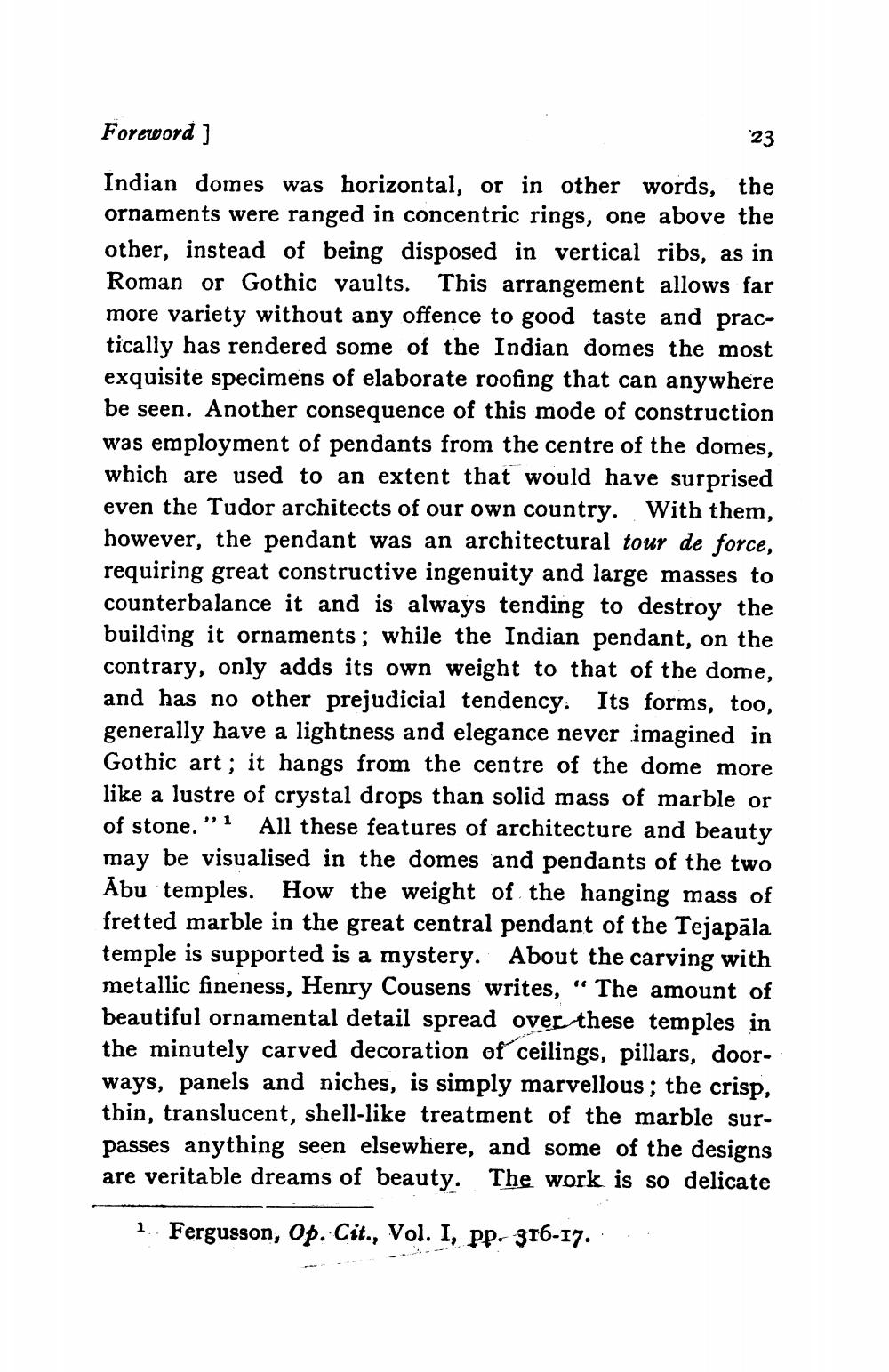________________
Foreword ]
23 Indian domes was horizontal, or in other words, the ornaments were ranged in concentric rings, one above the other, instead of being disposed in vertical ribs, as in Roman or Gothic vaults. This arrangement allows far more variety without any offence to good taste and practically has rendered some of the Indian domes the most exquisite specimens of elaborate roofing that can anywhere be seen. Another consequence of this mode of construction was employment of pendants from the centre of the domes, which are used to an extent that would have surprised even the Tudor architects of our own country. With them, however, the pendant was an architectural tour de force, requiring great constructive ingenuity and large masses to counterbalance it and is always tending to destroy the building it ornaments; while the Indian pendant, on the contrary, only adds its own weight to that of the dome, and has no other prejudicial tendency. Its forms, too, generally have a lightness and elegance never imagined in Gothic art; it hangs from the centre of the dome more like a lustre of crystal drops than solid mass of marble or of stone."1 All these features of architecture and beauty may be visualised in the domes and pendants of the two Abu temples. How the weight of the hanging mass of fretted marble in the great central pendant of the Tejapāla temple is supported is a mystery. About the carving with metallic fineness, Henry Cousens writes, “The amount of beautiful ornamental detail spread over these temples in the minutely carved decoration of ceilings, pillars, doorways, panels and niches, is simply marvellous; the crisp, thin, translucent, shell-like treatment of the marble surpasses anything seen elsewhere, and some of the designs are veritable dreams of beauty. The work is so delicate
1. Fergusson, op. cit., Vol. I, pp. 316-17.




